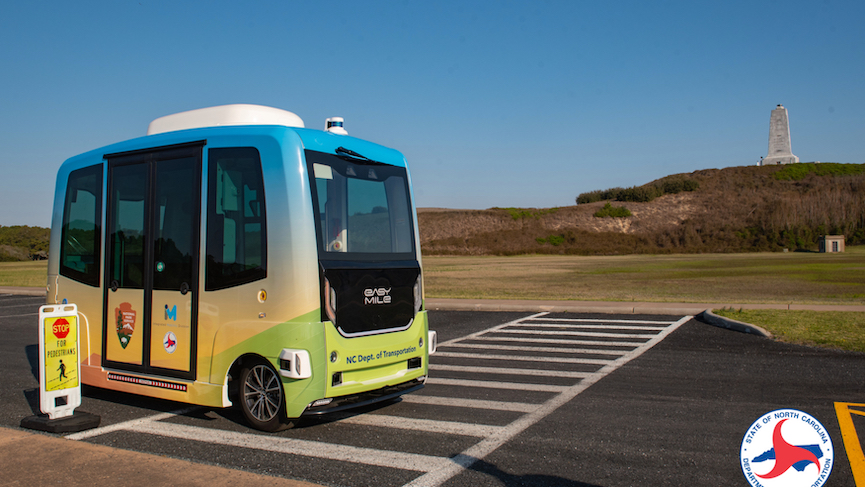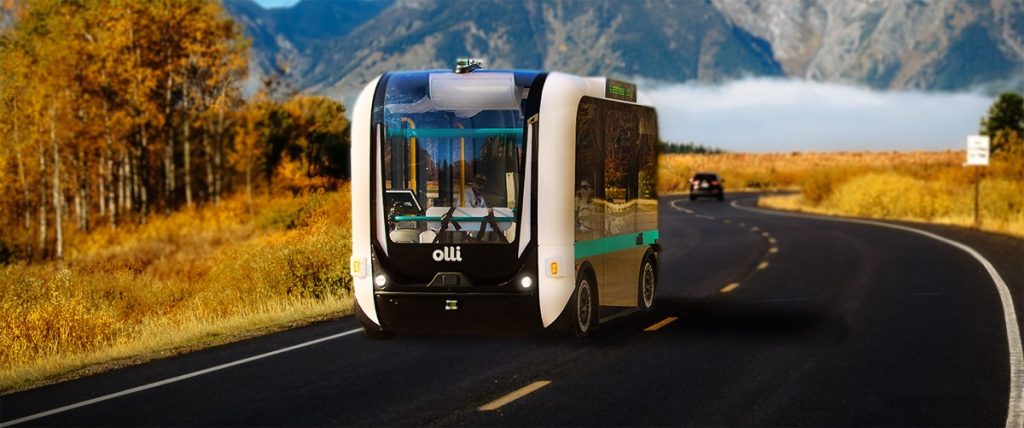Visitors to at least two U.S. national parks this summer will have the chance to check out short driverless rides between park highlights. The Wright Brothers National Memorial in Kill Devil Hills, North Carolina, and the venerable Yellowstone National Park, oldest in the country, administrators have implemented autonomy for visitors.

In North Carolina, the Connected Autonomous Shuttle Supporting Innovation (CASSI) will take passengers from the museum to the First Flight bronze sculpture and back, about a half-mile round trip
North Carolina Department of Transportation officials say CASSI will help transportation officials learn more about how driverless vehicles can be safely and effectively used in the future. CASSI’s pilot program will collect information including the numbers of passengers, trips, and the shuttle’s battery usage.
The vehicle navigates its routes using LiDAR and GPS used to map and then monitor a fixed route. Sensors in the vehicle continuously scan the shuttle’s surroundings and signal for it to stop when an obstacle is too close.
Although CASSI might be driverless, a trained customer service operator will ride inside as part of the pilot to ensure the safety of the passengers. The operator will be able to manually stop the vehicle at any time of the ride. Rides are free.
Smarter than the Average Park

To ease traffic congestion in coveted Yellowstone National Park, a new pilot shuttle program starts in May 2021. Six-passenger low-speed electric autonomous shuttles will make their rounds in the Moran and Washburn Hotel area as well as Upper and Middle campgrounds, taking riders to neighboring visitor centers. If the pilot program is successful, the park will consider using the service permanently to improve the experience of the park.
In 2018, the National Park Service published a study, “Implementing Autonomous and Connected
Vehicle Technologies in the Park Setting.” With emerging AV and CV technology and policy, NPS evaluated how to best prepare its in-park transportation system and services to take advantage of AV and CV opportunities, while mitigating potential challenges.
The study focused on six selected areas, presumable for the variety of locales and services they presented. It made the following recommendations.
Cabrillo National Monument, California: AV Restricted Transit with CV Add On
Joshua Tree National Park, California: AV Mixed Transit with CV Add On
Mojave National Preserve, California: AV Personal
Santa Monica National Recreation Area, California: AV Personal
Zion National Park, Utah: AV Restricted Transit with CV Add On
There is no evidence that such projects have yet been implemented; Yellowstone and Kittyhawk are the only ones published to date.

